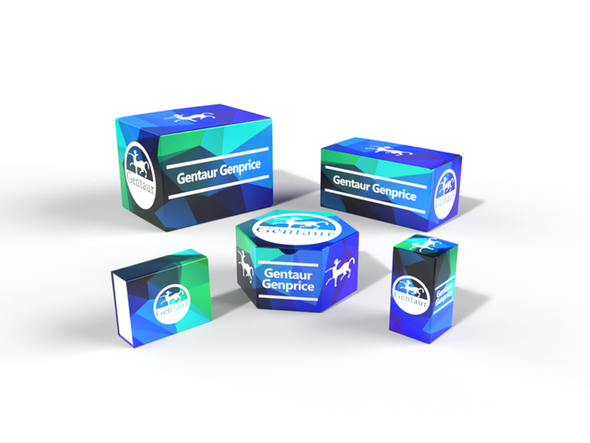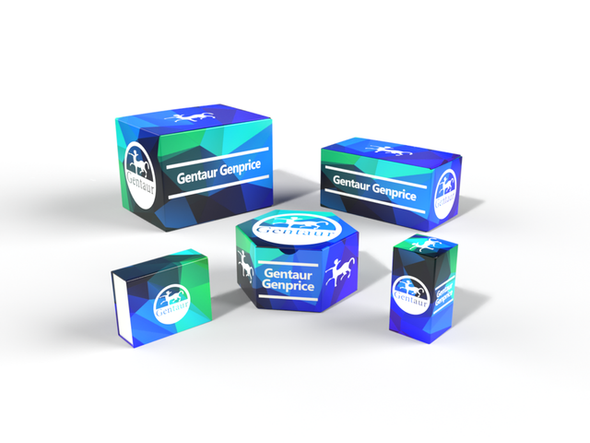Description
Clatherin Light Chain Antibody [CLC/1421] | 33-666 | Gentaur UK, US & Europe Distribution
Host: Mouse
Reactivity: Human
Homology: N/A
Immunogen: A recombinant N-terminal protein fragment from human Clathrin light chain was used as the immunogen for the Clathrin Light Chain antibody.
Research Area: Immunology
Tested Application: Flow, IF, WB, IHC-P
Application: Flow Cytometry: 0.5-1 ug/million cells in 0.1ml
Immunofluorescence: 1-2 ug/ml
WB: 0.5-1 ug/ml
IHC (FFPE) : 0.5-1 ug/ml for 30 min at RT
Optimal dilution of the Clathrin Light Chain antibody should be determined by the researcher.
Specificiy: N/A
Positive Control 1: N/A
Positive Control 2: N/A
Positive Control 3: N/A
Positive Control 4: N/A
Positive Control 5: N/A
Positive Control 6: N/A
Molecular Weight: N/A
Validation: N/A
Isoform: N/A
Purification: Protein G affinity chromatography
Clonality: Monoclonal
Clone: CLC/1421
Isotype: IgG2b, kappa
Conjugate: Unconjugated
Physical State: Liquid
Buffer: PBS with 0.1 mg/ml BSA and 0.05% sodium azide
Concentration: 0.2 mg/mL
Storage Condition: Aliquot and Store at 2-8˚C. Avoid freez-thaw cycles.
Alternate Name: N/A
User Note: Optimal dilutions for each application to be determined by the researcher
BACKGROUND: Recognizes proteins of 31-44kDa, which are identified as Clathrin Light Chains (both A & B) . Clathrin is composed of three heavy chains and three light chains, which associate non-covalently to form a triskelion structure. Clathrin light chain regulates the self-assembly of triskelions onto intracellular membranes. Clathrin light chain subunits (LCA and LCB) contribute to regulation of coated vesicle formation to sort proteins during receptor-mediated endocytosis and organelle biogenesis. LCA and LCB are encoded by two discrete genes. They share only 60% homology, and have certain features in common. Both LCA and LCB undergo alternative mRNA splicing, which results in the generation of tissue-specific isoforms.

![Clatherin Light Chain Antibody [CLC/1421] Clatherin Light Chain Antibody [CLC/1421]](https://cdn11.bigcommerce.com/s-1rdwiq712m/images/stencil/608x608/products/483903/489732/gentaur-genprice__26005.1661610467__29809.1661628092__75433.1661676199__77988.1661684280__64362.1661692443__02085.1662049603__45075.1662119302__91744.1662191540__21580.1662291419__73851.1663498786.png?c=1)
![Clatherin Light Chain Antibody [SPM174] Clatherin Light Chain Antibody [SPM174]](https://cdn11.bigcommerce.com/s-1rdwiq712m/images/stencil/590x590/products/483904/489733/gentaur-genprice__26005.1661610467__29809.1661628092__75433.1661676199__77988.1661684280__64362.1661692443__02085.1662049603__45075.1662119302__91744.1662191540__21580.1662291419__31636.1663498786.png?c=1)



